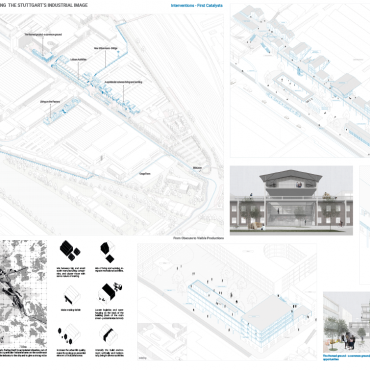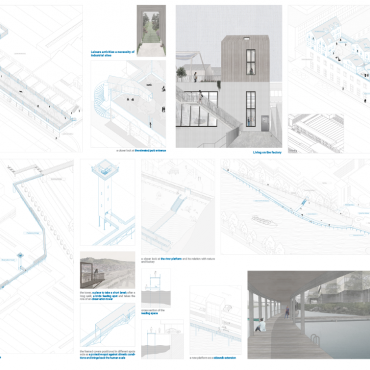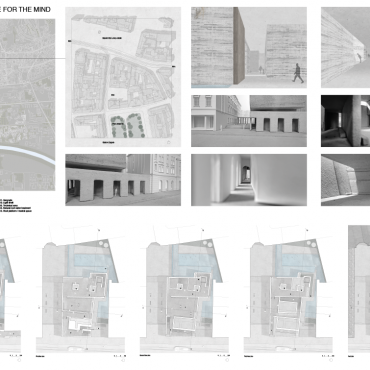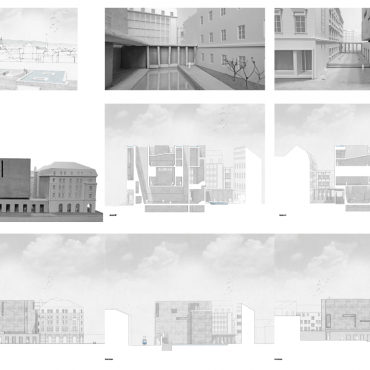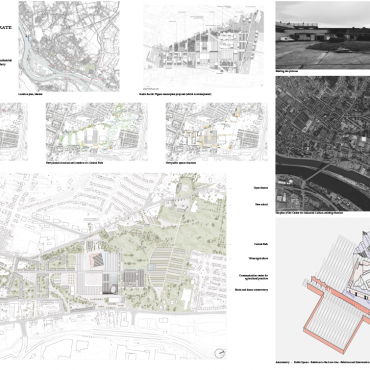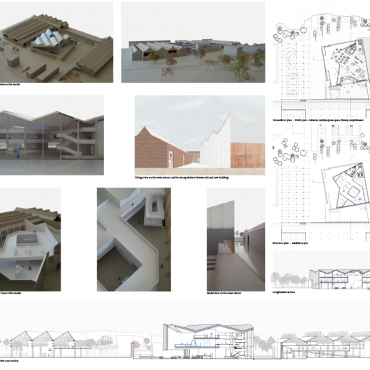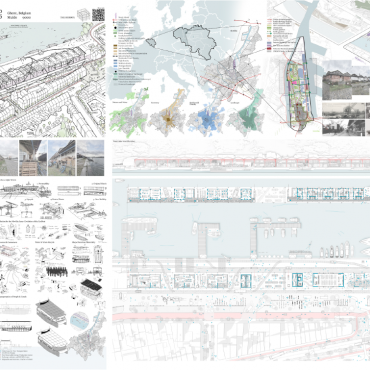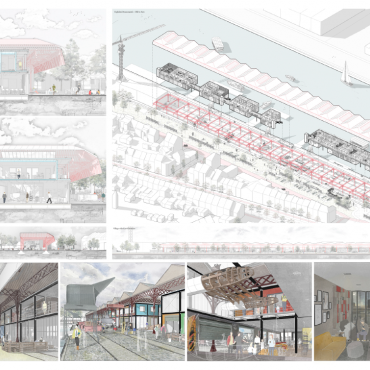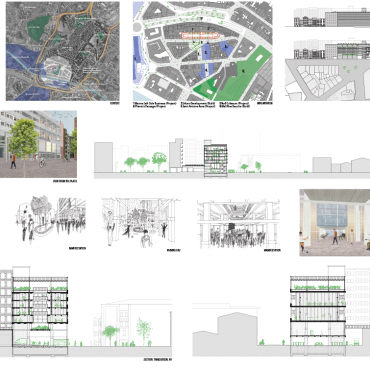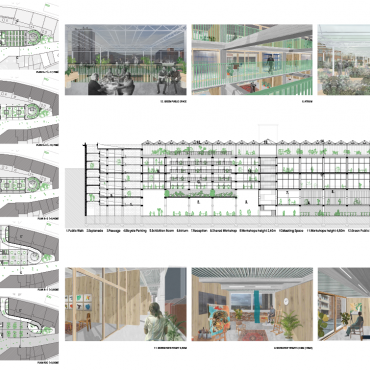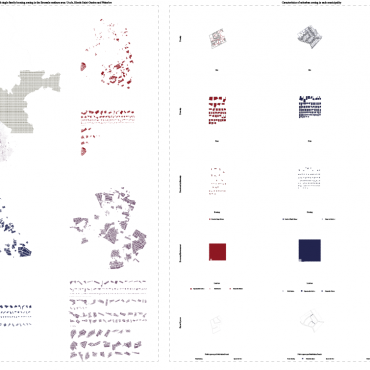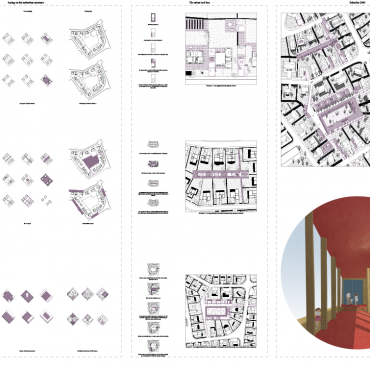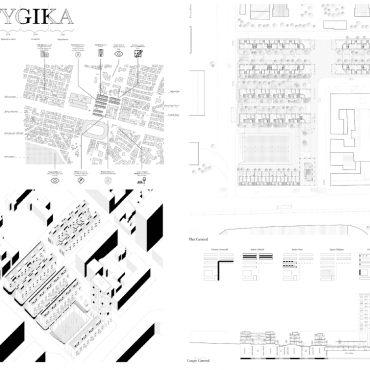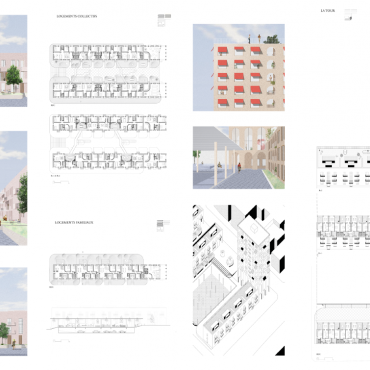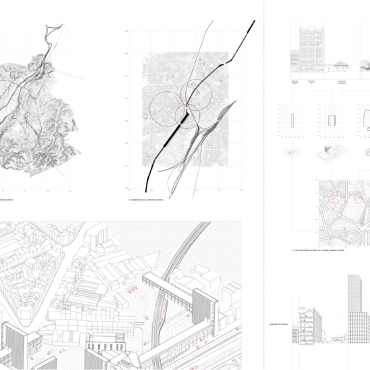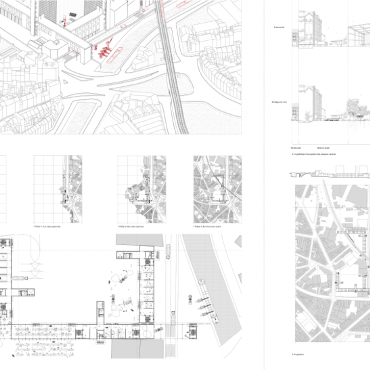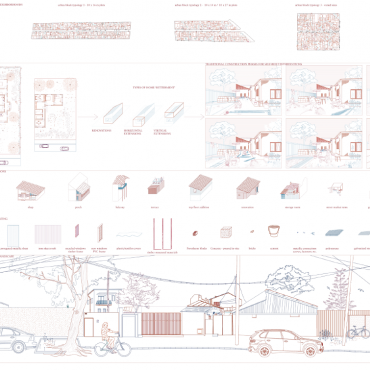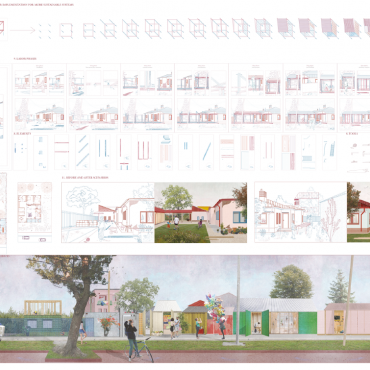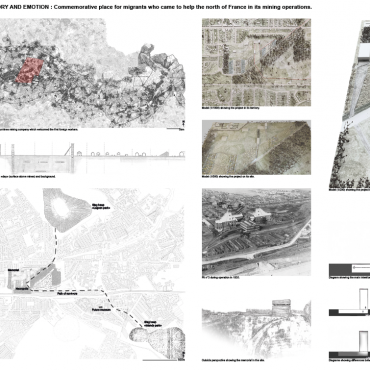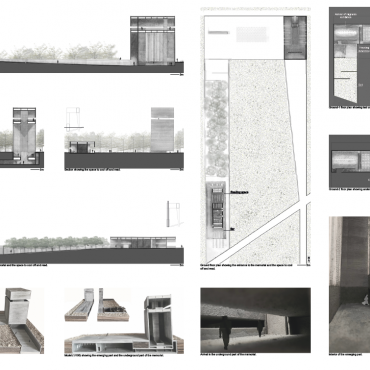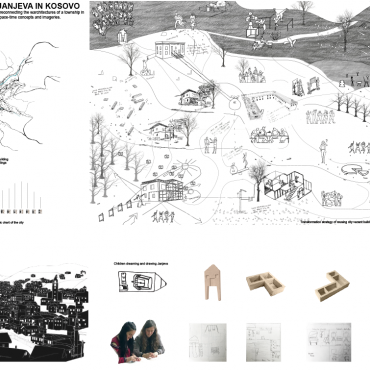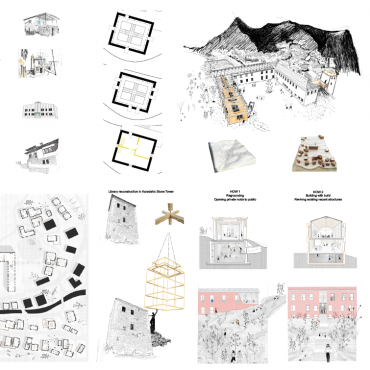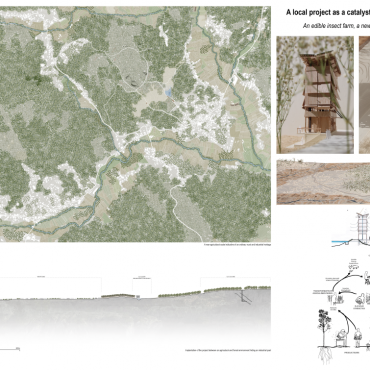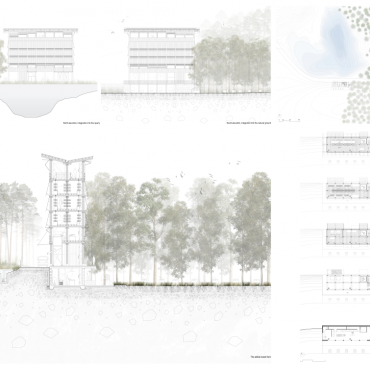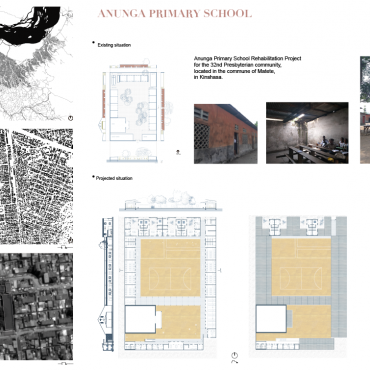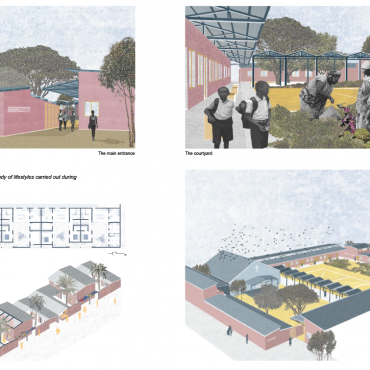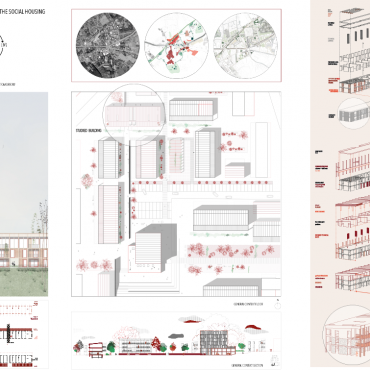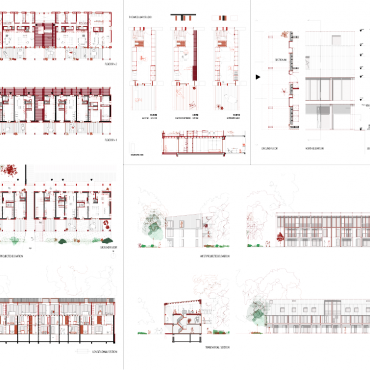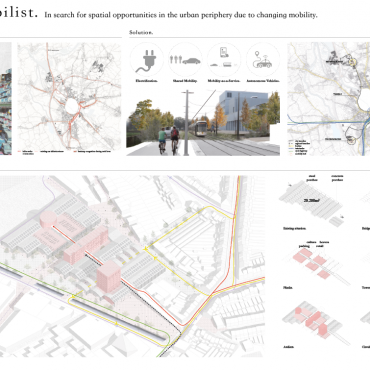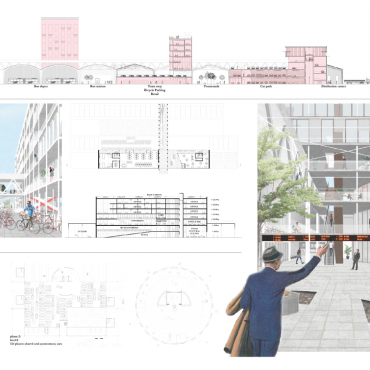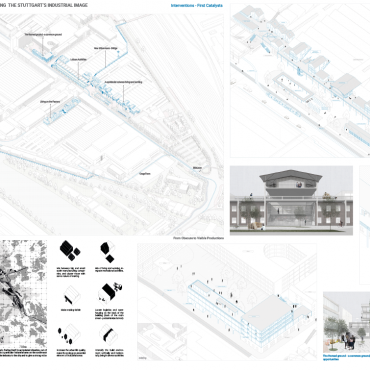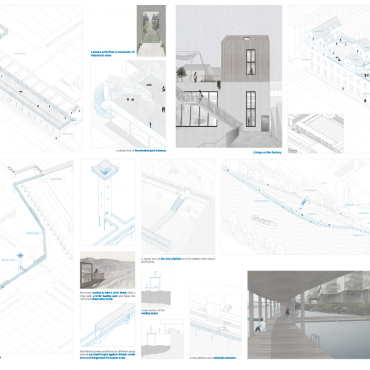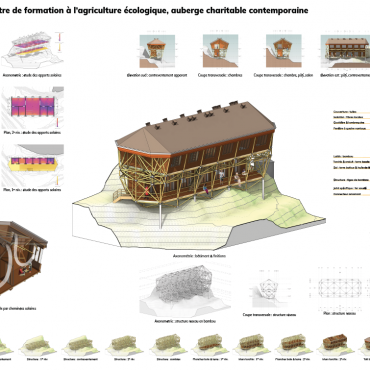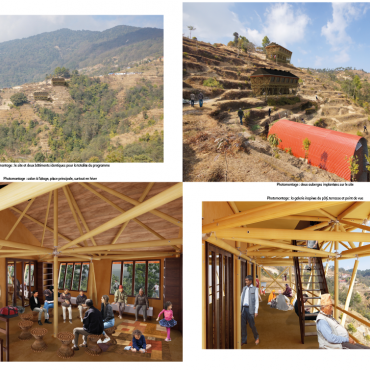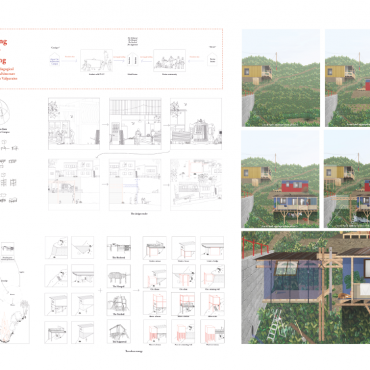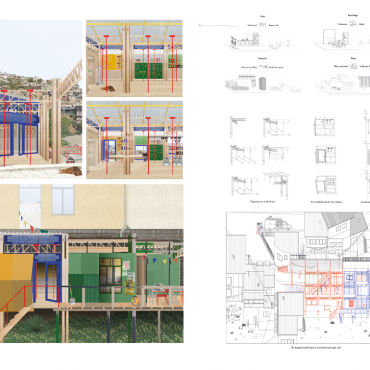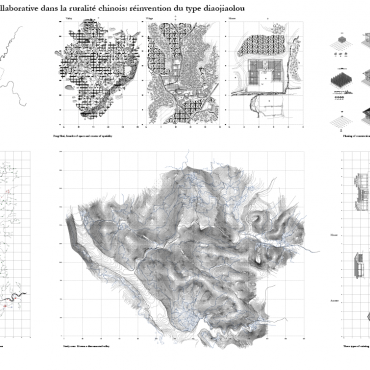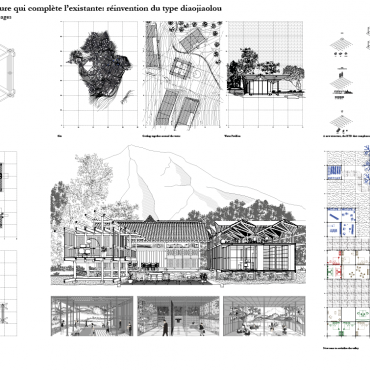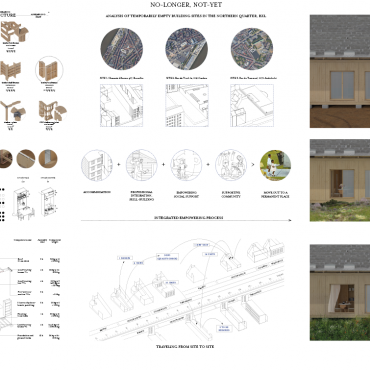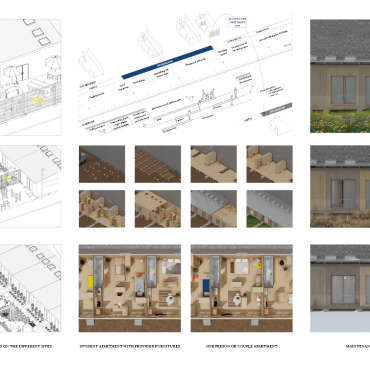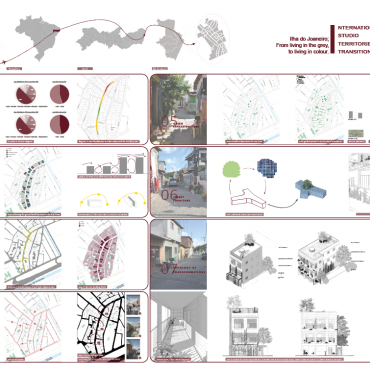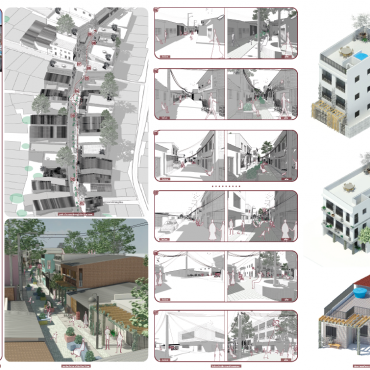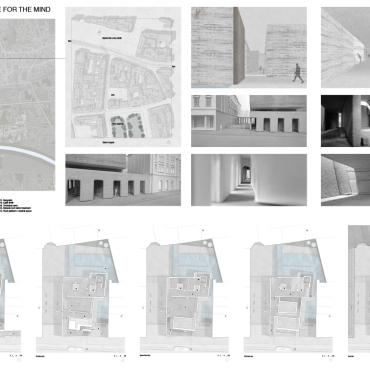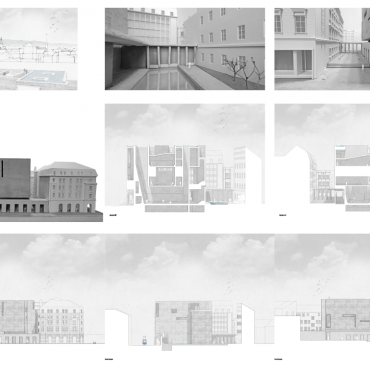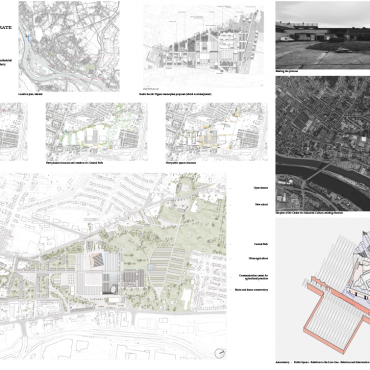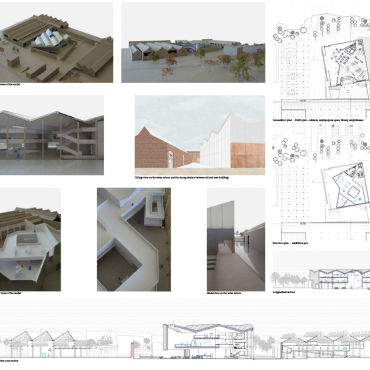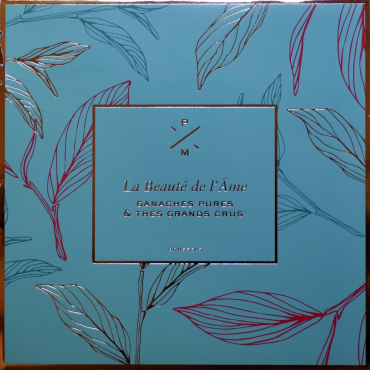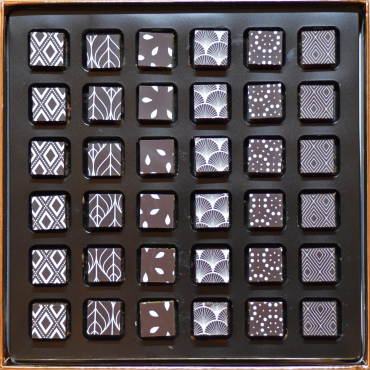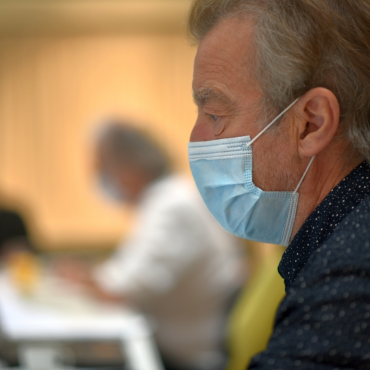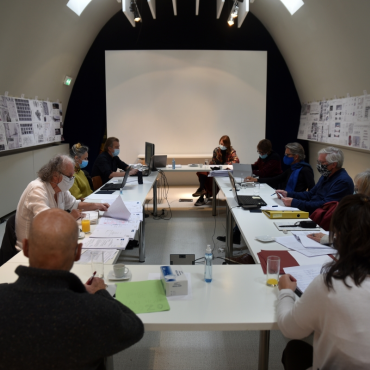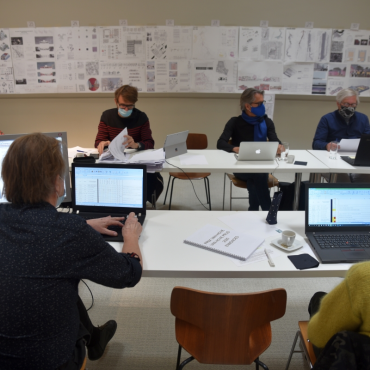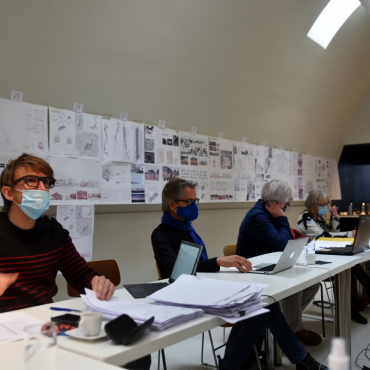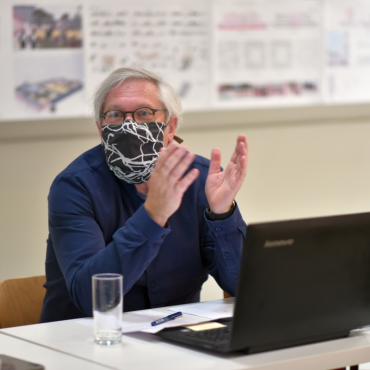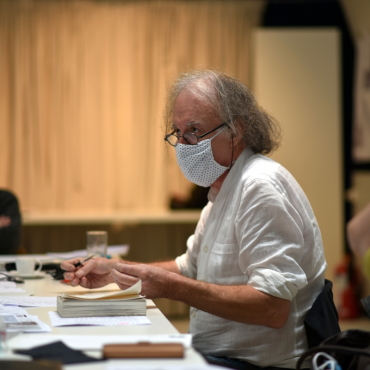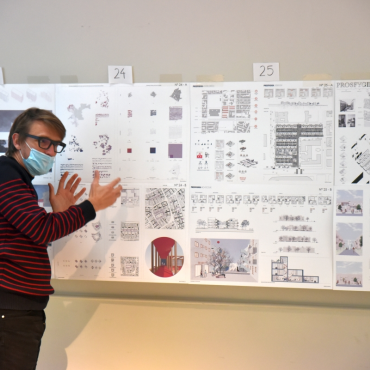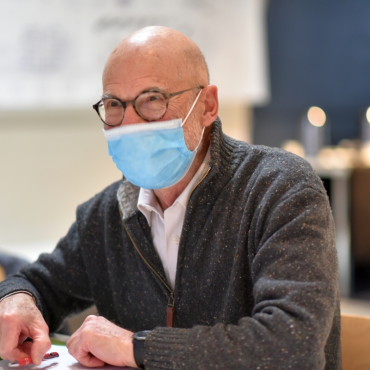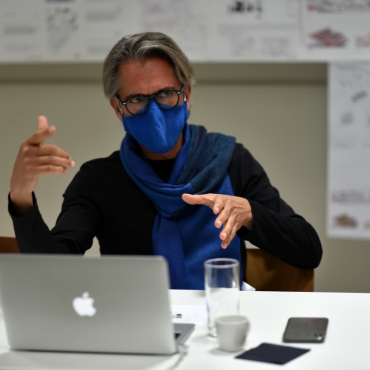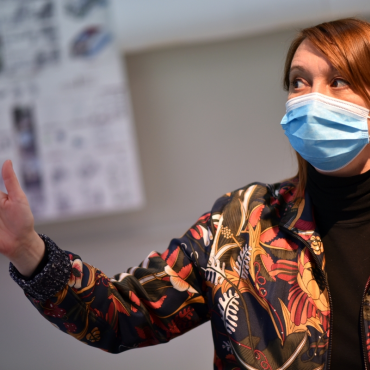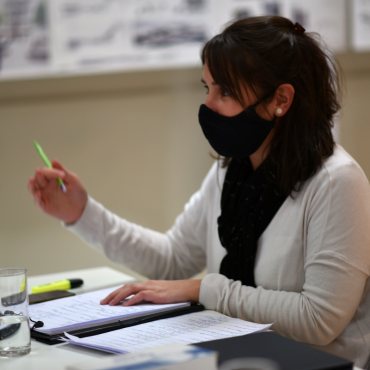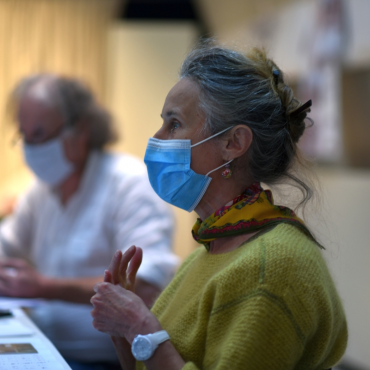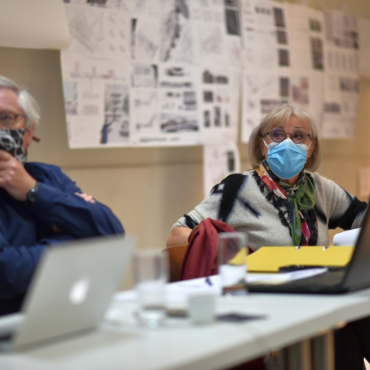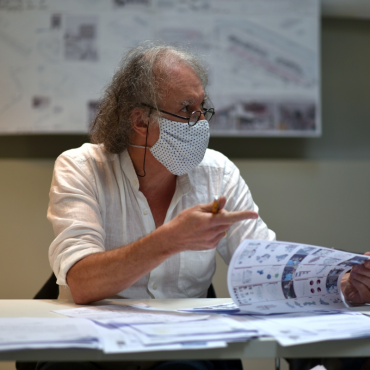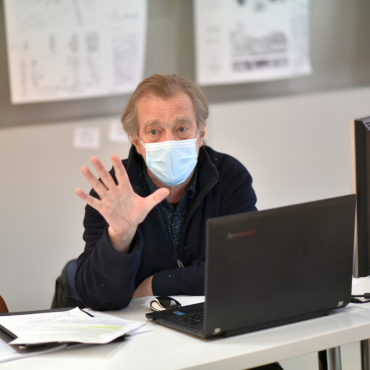Van Hove Prize 2020
On October 17, 2020 the jury of the Van Hove Prize met at the headquarters of the UPA-BUA from 9h00 till 18h00.
The jury was composed of :
- Sylvie Bruyninckx, architect, founder of Viva Architecture, administratror of BVA, member UIA
- Sven Grooten, architect and urban planner, co-founder of B-architecten and B-bis
- Pierre Hebbelinck, architecte, président du jury et conférencier à la proclamation
- Didier Holemans, engineer-architect, president of UPA-BUA
- Thierry Lamy, architect, member of the Board of Directors of UPA-BUA
- Giulia Marverti, architect UPA-J
- Marie-Madeleine Mennens, architect, member of UPA-BUA, CRD Brxl, CfgOA. BCBW and CNOA
- Nico Steinmetz, architect at G.-D. from Luxembourg
- Catherine Titeux, architect and dr. in history of art, teacher at ENSAM (Montpellier)
- Pierre Van Assche, architect and urban planner, member of UPA-BUA, in charge of the Van Hove Prize
- Jean-Paul Verleyen, architect, delegate administrator Institut Saint-Luc Bruxelles.
Details and comments of the jury :
Preliminaries :
What is special about this sixth session of the Van Hove Prize is the sheer number of entries. Fifty-nine entries did not make the jury's task any easier, especially since, as in previous years, all the projects were not only well presented, but almost all seemed worthy of interest. It was therefore a thankless task, if not ungrateful, for the many interesting projects that were not selected.
Because of the way it works, the Van Hove Prize brings together a fairly broad sample of projects that are representative of the best that is being done in Belgian architecture faculties. Thus, each year, some trends more or less shared by these faculties emerge, as well as some specificities of these faculties. In this sense, the Van Hove Prize is an observatory of architectural education in Belgium. Generally speaking, the jury and the organisers of the Prize perceive in this last session of the Prize an increasingly sustained attention to the current challenges of humanity, on the scale of architecture. The virtuoso demonstrations of large emblematic facilities have been set aside in favour of more fundamental and more involved issues, against a background of almost unanimously shared social and environmental concerns.
The question of housing comes first in terms of the number of projects presented (28 projects) and, for the most part, with accents of generous commitments such as aid to deprived or marginal social groups, these concerns being frequently applied outside our borders (7 projects). Manufacturing processes are an integral part of the reflections: the rehabilitation of social housing (5 projects), ecological and solidarity-based construction or self-construction (5 projects), emergency housing (2 projects) or housing related to mental health (1 project). Furthermore, in addition to the search for specific or new ways of living (5 projects), the concern for density and mix applied in urban, peri-urban or economic environments is the occasion for particularly interesting proposals (3 projects).
The other projects are divided half between programmes related to production and facilities.
For the former (15 projects), the urban service or production economy occupies a privileged place (8 projects), followed by agriculture and ecology (5 projects), but also applied mainly to urban contexts. Then come the reconversions of former industrial sites (2 projects).
Among the equipment programmes (15 projects), there is a predilection for memorial projects (5 projects) and for the reallocation of symbolic places (3 projects), the other programmes being applied to cultural, functional, educational or social inclusion facilities. In addition, the issue of equipment integrated into the natural heritage has not been forgotten (2 projects).
Five projects presented at this session are the result of teamwork, two of which were presented as joint applications.
Furthermore, the jury regretted that one of the apparently very promising projects, presented exclusively in the form of a video, could not be included in the nominees because it did not respect the presentation methods imposed by the rules.
Finally, contrary to the previous session, strategies related to large-scale territorial management were less common, with only one project presented tackling this issue. As a reminder, although the jury approves of the involvement of architects in research related to these issues, it considered last year that they call for the establishment of multidisciplinary teams that a candidate for the diploma of architect or architectural engineer cannot assume alone. Moreover, the Van Hove Prize jury does not have the material conditions or the appropriate skills to judge the relevance of such projects.
On the other hand, for the present session of the Van Hove Prize, as the new rules stipulate, priority has been given to architecture as the embodiment of theoretical, programmatic or societal discourse.
At the end of its deliberations, the Jury unanimously decided to designate three winners, according to the following ranking :
-
The Van Hove Prize 2020 to Ludwig VOZ (candidate n°43), with an award of € 2.500.
-
A Special Mention with an award of € 1.500 to Behar NEZIRAJ (candidate n°10)
-
A Special Mention with an award of € 1.000 to Suzan VERCAEMPST (candidate n°47).
VAN HOVE PRIZE 2020 : 2.500 €
Ludwig VOZ (Ulg - Faculté d'architecture) project n°43
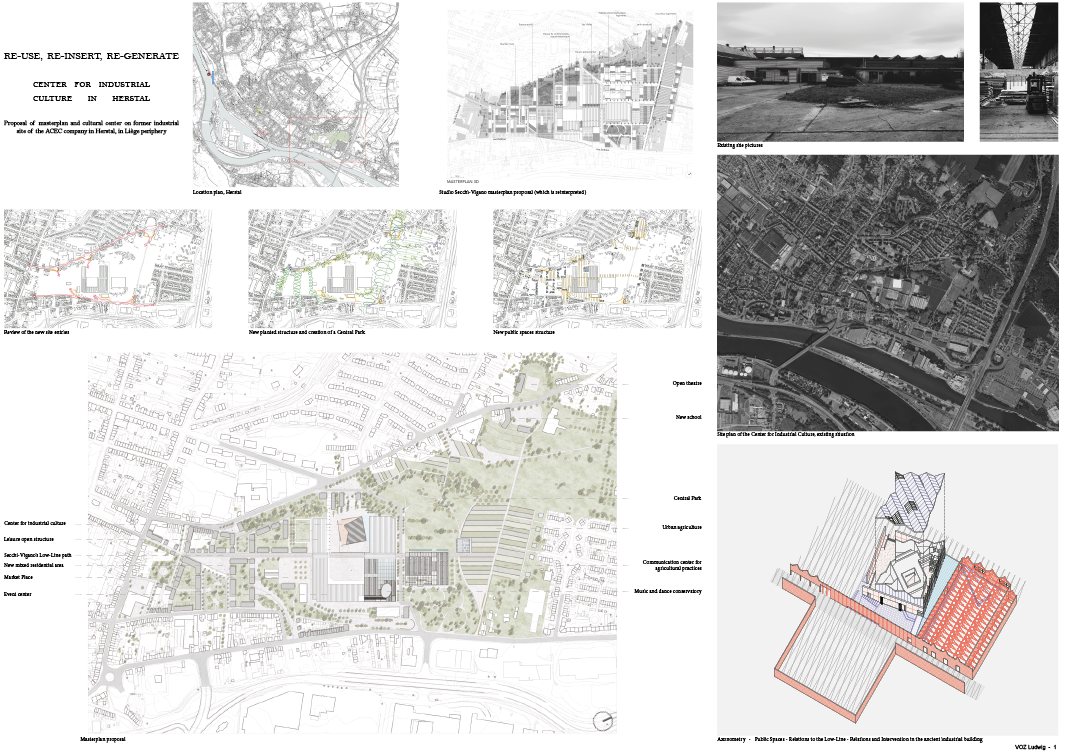
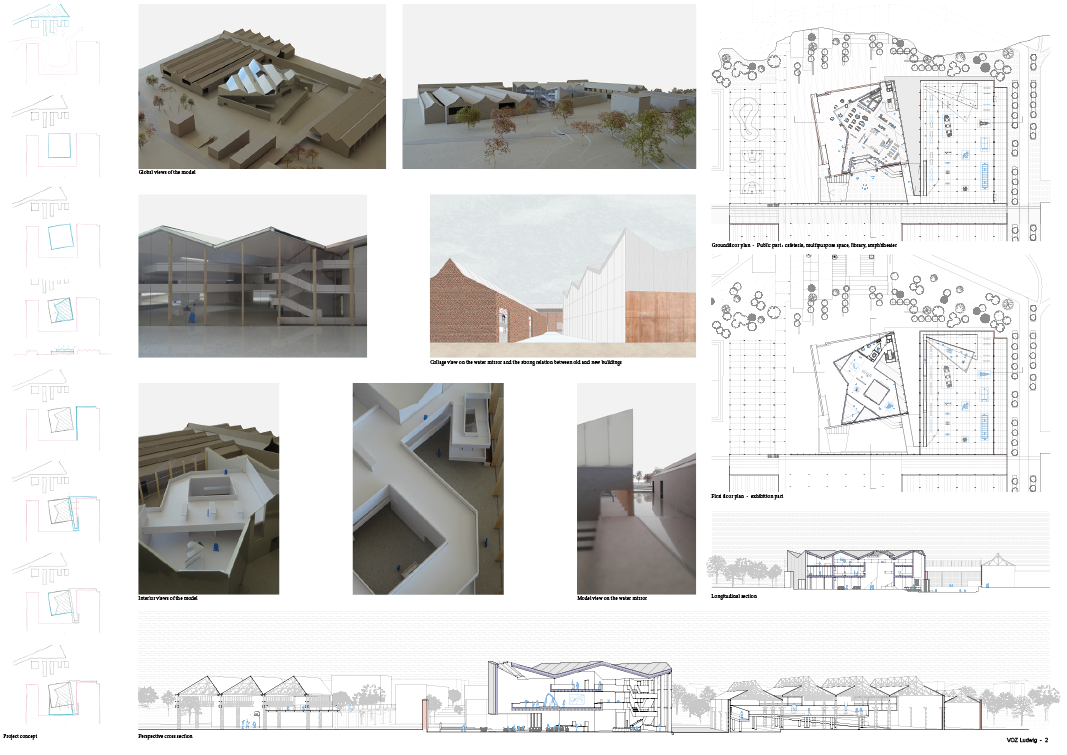
RE-USE, RE-INSERT, RE-GENERATE : Center for industrial culture in Herstal
Ludwig Voz's project is part of a master plan carried out in a team with Alexandre Houthoofdt (ULiège) based on an interpretation of the proposal by Studio Secchi-Vigano to revitalise the former industrial site of "ACEC" in Herstal. This master plan aims to give a new dynamic to this abandoned historical industrial site and to reintegrate it into the surrounding urban fabric.
A new building, installed in the heart of the industrial complex, one wing of which serves as an exhibition hall for large-scale pieces, and with which it communicates via a ramp passing over a water mirror, clearly displays its function: reception of the public on the ground floor, exhibition space on two floors on the mezzanine.
The project is particularly attractive because of its architectural response. The use of the off-axis square elementary form as a focal point creates a movement and a dialogue that enhances the existing industrial architecture while reactivating the site. The movement is reinforced by a pathway structured by various small public spaces starting from the new entrance, and extending inside thanks to the multiplication of sub-spaces generated by the play of off-axis and cut-out levels.
This project, interfacing with the city and tangent to the main east-west axis of the site, extends the reflection on urbanity. The heterogeneous space creates a porosity that allows a glimpse of the park to the north.
The geometric manipulation, in a sort of free improvisation, introduces a loss of reference points and a scattering effect which could appear risky if they did not establish rich relationships between the scales of the industrial building and the more intimate scales of the museum installations.
MMM & CT
SPECIAL MENTION at VAN HOVE PRIZE 2020 : 1.500 €
Behar NEZIRAJ (KUL - Sint-Lucas Brussel) project n°10
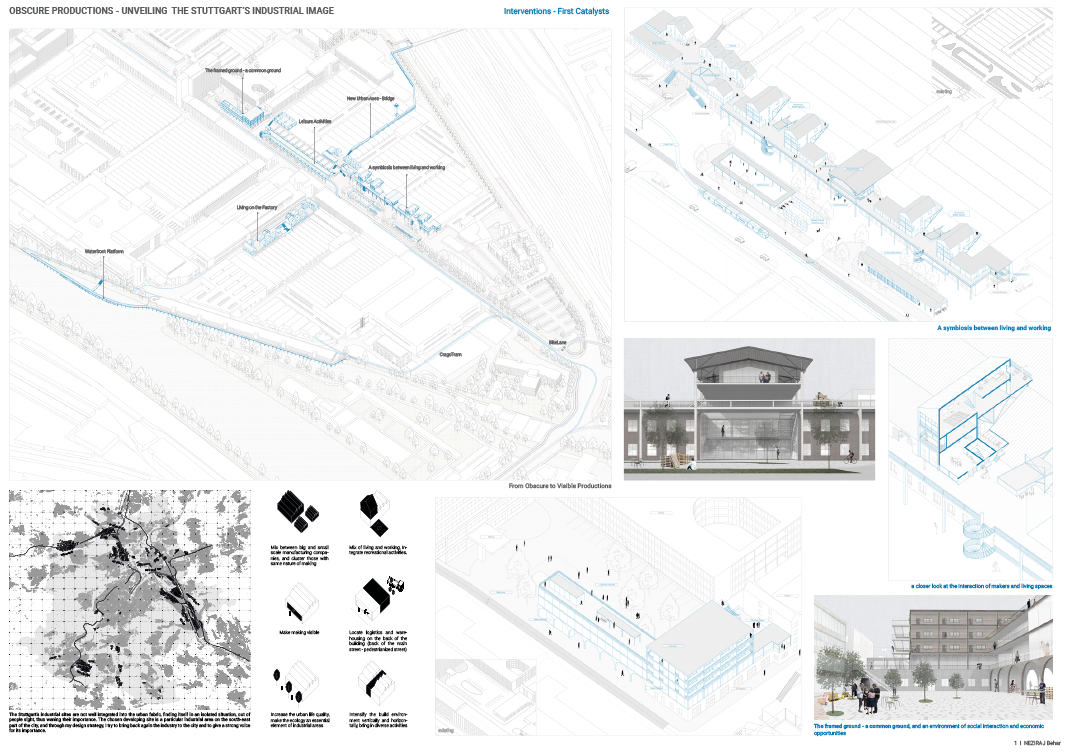
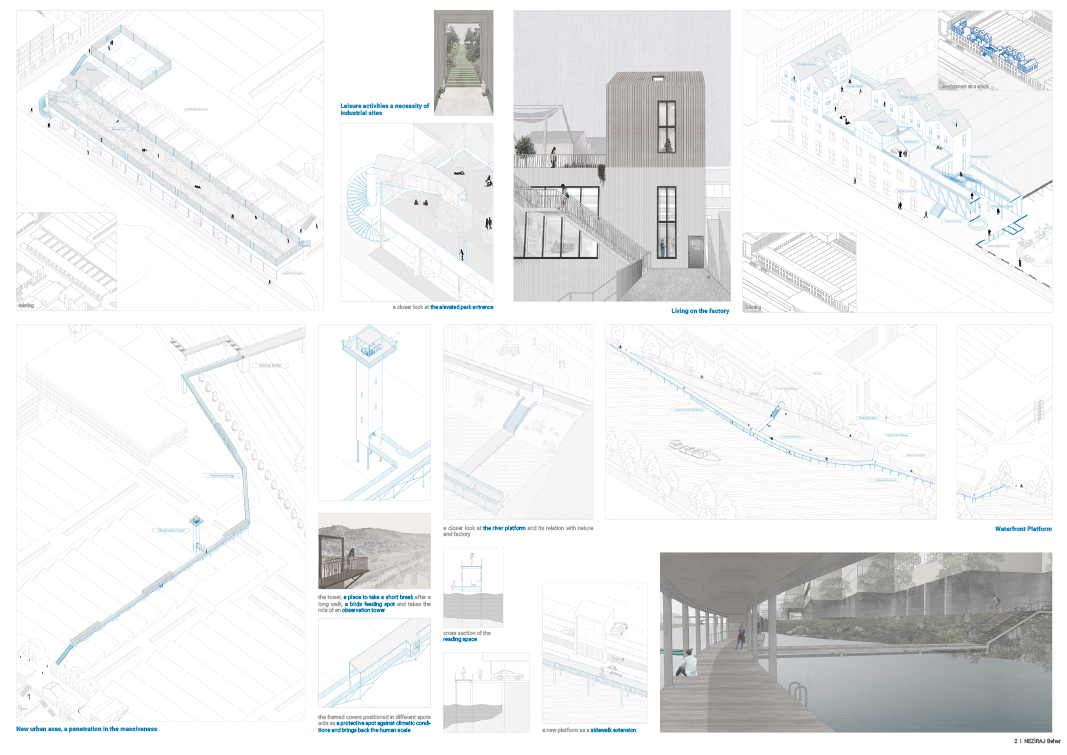
PRODUCTIONS OBSCURES - Dévoilant l'image industrielle de Stuttgart
Behar Neziraj's project focuses on production processes in industrial areas, especially factories, and their integration into the city structure. The Daimler industrial area was chosen for the study - a vehicle manufacturing plant located in the south-eastern part of the city of Stuttgart.
The aim of the project was to make the existing industry (currently isolated and out of sight of people) suitable and sustainable as a mixed urban district, boldly integrating other activities such as housing, production spaces, cultural activity spaces, while developing the notion of ecology.
The proposal creates real urban qualities and strengthens social interactions by proposing a progressive transformation of the site.
The work is presented at different scales, such as a master plan clarifying the type of activities and a human scale plan detailing precisely what complements the existing spaces.
Behar Neziraj presented a project that met all the criteria of the Van Hove Prize and was supported by a clear and sensitive graphic representation, explaining the whole and the parts at a glance. This allowed the jury to appreciate a subtle and successful approach.
GM & SB
SPECIAL MENTION at VAN HOVE PRIZE 2020 : 1.000 €
Suzan VERCAEMPST (KUL - Sint-Lucas Gent) project n°47
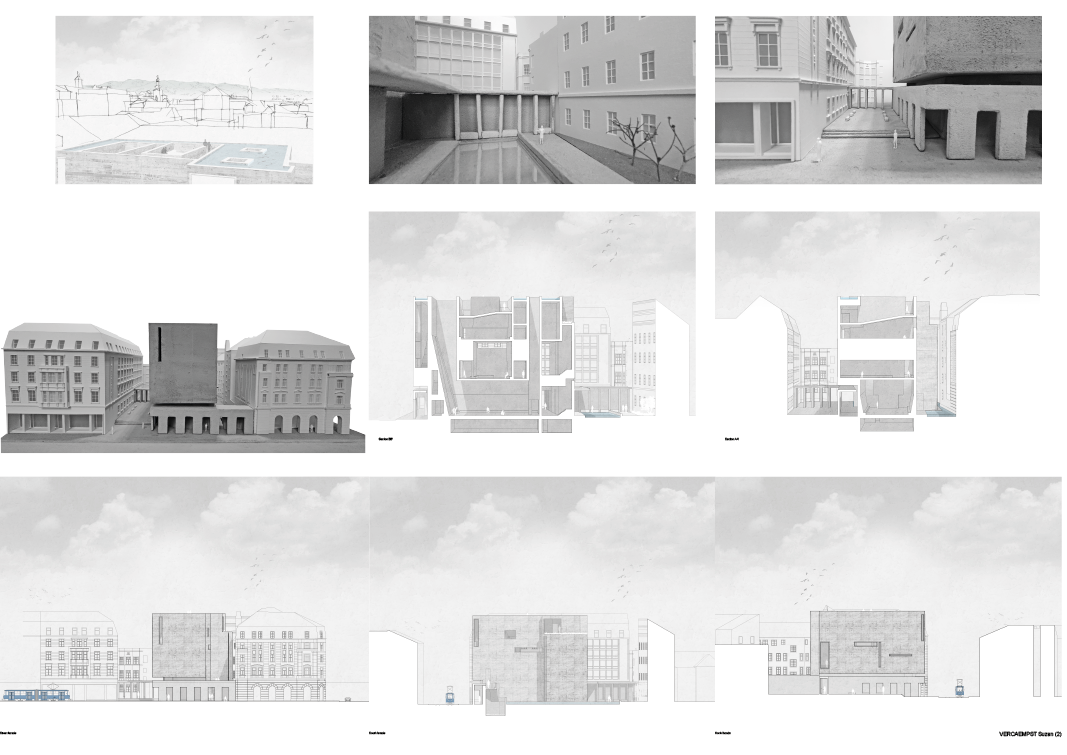
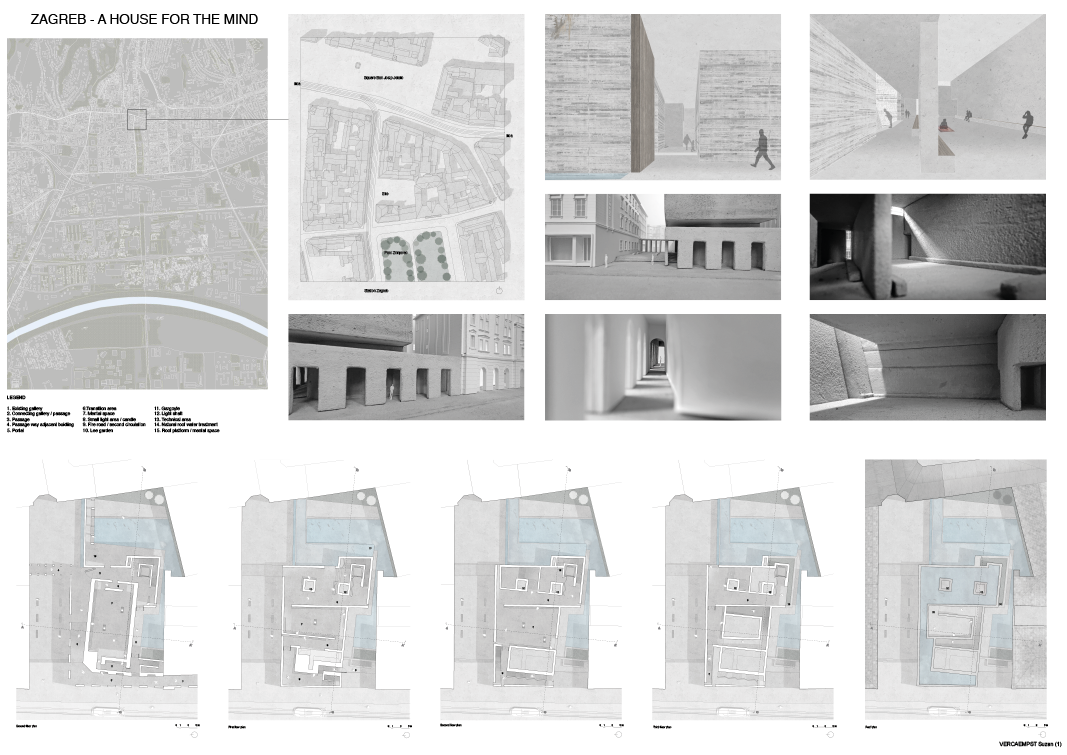
A HOUSE FOR THE MIND
The project proposed by Suzan Vercaempst is located on Praška Street, close to Ban Jelačić Square, the main meeting place of Zagreb, the capital of Croatia. The chosen site hides a loaded history related to the first and last synagogue in the city destroyed during the Second World War and the Jewish community of Zagreb victim of the Holocaust. After this period, the site became a car park, a function it still performs today.
The project clearly combines this particular historical background with the contemporary needs of the city by shaping an architecture that allows and promotes silence, reflection, contemplation and peace for all, religious or not. The design is expressed through a strategy of "passage" where rhythm, atmosphere and specific lights create for the visitor to this place of memory the conditions for a spatial experience that leads to a state of mind suitable for introspection.
The jury particularly appreciated Suzan Vercaempst's ability to articulate a volumetry enhanced by the materiality of concrete to the benefit of a spatiality expressed here with a brilliance and sensitivity consistent with the purpose developed. Through its sober language and the serenity that the architecture exudes, the project goes beyond the simple commemoration of a brutal episode in the city's history to create a unique place of serenity and identification that projects it into the future and opens it up to the greatest number of people.
J-PV & DH
Other nominated projects : (in order of arrival at UPA-BUA)
Laurine KHAROUBI (UCL LOCI, site de Tournai) project n°03
Architecture comme mémoire et émotion : Lieu commémoratif pour les migrants venus aider le nord de la France dans son exploitation minière.
A memorial route comprising a partial reconstruction of the underground site and an emerging, vertical and monumental volume.
Iulia ILIE (KUL - Sint-Lucas Brussel) project n°09
Architectures de transition.
An aid to self-building in Bucharest. A series of guidelines is proposed in the form of a "digital platform" dedicated to architects and inhabitants, the informal being a source of knowledge and inspiration.
Frank ALONSO VAN OORSCHOT (KUL - Sint-Lucas Gent) project n°11
Productive Urban Hub – Loods 26.
A rehabilitation of former port facilities in Muide (Ghent). The structure of the old warehouses is enhanced with the integration of new parts with multiple uses and preserving a certain permeability of the site.
Louis ROOBAERT (UCL LOCI, site de Bruxelles) project n°17
Une architecture collaborative dans la ruralité chinoise, réinvention du type diaojiaolou.
A reinvention of the "diaojiaolou" architectural type to accommodate new uses linked to the development of the economy and the provision of contemporary comfort in housing.
Céline LOPES (UCL LOCI, site de Tournai) project n°20
Un projet local comme catalyseur du territoire rural - une ferme aux lnsectes comestibles.
Un projet local comme catalyseur du territoire rural - une ferme aux lnsectes comestibles
An astonishing and imposing wooden building inspired by the local rural and industrial heritage, intended for an edible insect farm in an unspoilt natural landscape in the heart of Portugal.
Michelle VENNEKENS (UAntwerpen - Architectuur) project n°22
Ilha do Joaneiro; From living in the grey to living in colour.
Proposals for the social transformation of a popular street in a favela in Recife (Brazil), including interventions in the public space proposed following an in-depth analysis of the existing situation.
Marco CARMOSINO (UCL LOCI, site de Bruxelles) projet n°24
Suburban archeology : une nouvelle vision pour le périurbain bruxellois.
Intervention scenarios for the typical suburban neighbourhoods in the south of the Brussels region, resulting from an inventory and a typological catalogue of projects dealing with this issue.
Gabriel CHÂTEL (ULB - Faculté d'architecture - LA CAMBRE - HORTA) project n°26
Réhabilitation du quartier de Prosfygika à Athènes.
Réhabilitation d’un quartier construit en 1933 à destination des réfugiés politiques du traité de Lausanne. Toutes les échelles du projet sont abordées, de la ville au logement, en passant par les espaces communs intégrant une place créée par une démolition-reconstruction bien circonscrite.
Romane M'BAO (ULB - Faculté d'architecture - LA CAMBRE - HORTA) project n°30
ÉCOLE PRIMAIRE D’ANUNGA.
Rehabilitation of a primary school in Kinshasa in the form of a small, quasi-autonomous urban entity, including a boarding school and staff accommodation, treated by reinterpreting a typology resulting from the diversion of models from the colonial period.
Sam NEEL & Dries VOUCKX (KUL – ingenieurswetenschappen - architectuur) project n°33
The Mobilist: In search for spatial opportunities in the urban periphery due to changing mobility.
Interventions on a multifunctional business site on the outskirts of Mechelen.
Rita ROZNÁR (KUL - Sint-Lucas Brussel) project n°44
PAS PLUS, PAS ENCORE ; TACTIQUES D’UTILISATION TEMPORAIRE
A proposal for temporary, dismountable and relocatable housing, to be built by self-construction on empty land awaiting definitive allocation.
Goele REYNDERS (KUL - Sint-Lucas Brussel) projet n°45
Building your learning. Exploring the pedagogical potential of the architecture of the Open City in Valparaíso.
Building your learning. Exploring the pedagogical potential of the architecture of the Open City in Valparaíso.
Support for self-building, coupled with participation and an in situ city learning project by student architects, applied to the construction of four houses on a steep site in Valparaiso.
Simon BERLAN VELASCO & Hugo BENEYTOUT (Ulg - Faculté d'architecture) project n°52
PEPINIERES DU MOULIN – reconversion d’un parking à Charleroi
Hybrid conversion of an imposing car park building in the heart of the city of Charleroi, for use by a variety of creative businesses and civic associations.
Argjire KRASNIQI (KUL - Sint-Lucas Gent) project n°54
RUINCARNATING JANJEVA
Study of post-war reconstruction in Kosovo, applied to the town of Janjeva, and based on a threefold strategy of revival: revision of the compartmentalisation of plots, experiments on vacant built structures, concrete intervention on a public building for a school.
Elise MULLENS (Ulg - Faculté d'architecture) project n°55
Vivre la cité de Fléron – Habiter le logement social.
In-depth and very detailed study of the rehabilitation of a social housing estate in Wallonia. Recomposition of the levels with the addition of external extensions for each dwelling, by means of simple constructive processes, based on a wooden structure.
Manon FLORES (UCL LOCI, site de Bruxelles) project n°56
LA VILLE PRODUCTIVE : Histoire d’une mutation
A new and vast centre of activities and housing in Curreghem, inserted on the edge of the canal in the form of a radical implantation of a vast island punctuated by four towers, leaving vast open spaces on the ground for future use.
Raphael PAUSCHITZ (KUL - Sint-Lucas Gent) projet n°57
Dharmaśālā : centre de formation à l’agriculture écologique, auberge charitable contemporaine
Design, based on a real project of the candidate, of an educational farm in two buildings distributed on the steep slopes of the Kathmandu valley. The particular shapes of the buildings are the result of the analysis of the typology of the hospices specific to this region and of an original application of bamboo structures responding to the seismic conditions.
CONCLUSION, a word by the president
Ambassadors
Jury duty in COVID 19 time, is that reasonable? To be masked from more than 1500 millimetres away for 9 hours of gagged debate. What’s the point?
The UPA-BUA has set up a prize which it presents as very simple, not too ambitious, with a rather humble scale. However, this prize puts forward structuring and fundamental subjects through the window of architectural learning.
The Van Hove Prize is aimed at a moment of existence that is a kind of tipping point, a point of balance, between training and production. What is a final-year student? How do they position themselves in the face of their questions and the various possibilities and impossibilities that surround their hopes?
Let us observe that these recipients have opted for an active participation in a prize that covers the entire Belgian educational map. Let us underline the will of this prize to reflect beyond the narrow costumes of national communities.
This invitation by the UPA-BUA to broaden the places of thought was deeply amplified by the places where these students anchored their reflections. We note that one third of the projects are located in Belgium, the second in Europe and the third somewhere on another side of the world map.
The projects presented also offered the jury an opportunity to observe the vast and fertile field of questioning through programmes whose foundations question the political dimension: agriculture, ecology, gender, sex, school, habitat, production, industry, station, hub, mobility, landscape, urbanism, museum, memory and tomb.
At the end of the jury, under the masks, the dream emerged that these men and women, these former students, would continue this prodigious work of awakening to the implementation of political questions through the tool of architecture. It is essential that they become the ambassadors of this prize and of the work of individual but also collective reflection displayed on the walls of this book that you have in your hands. May these women and men become ambassadors of this rich material to the countries of their origin, to the institutions and faculties that have welcomed them throughout Europe and the world, to their rural and urban communities.
Ambassadors of culture and reflection to everyone, to the media and to politicians.
Ambassador. What a great job!
Pierre Hebbelinck/ Architect and Editor
Othée 12th November 2020

